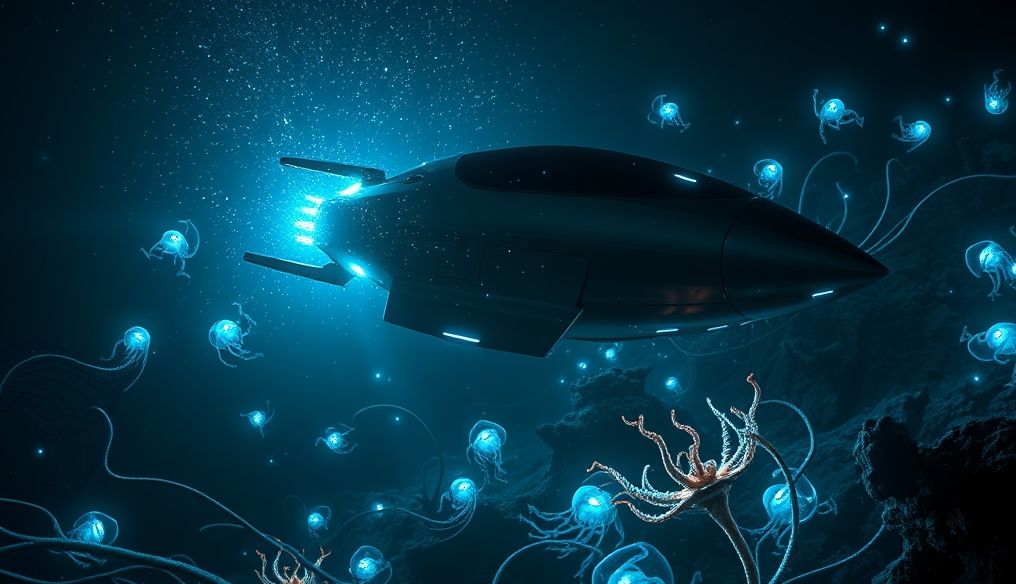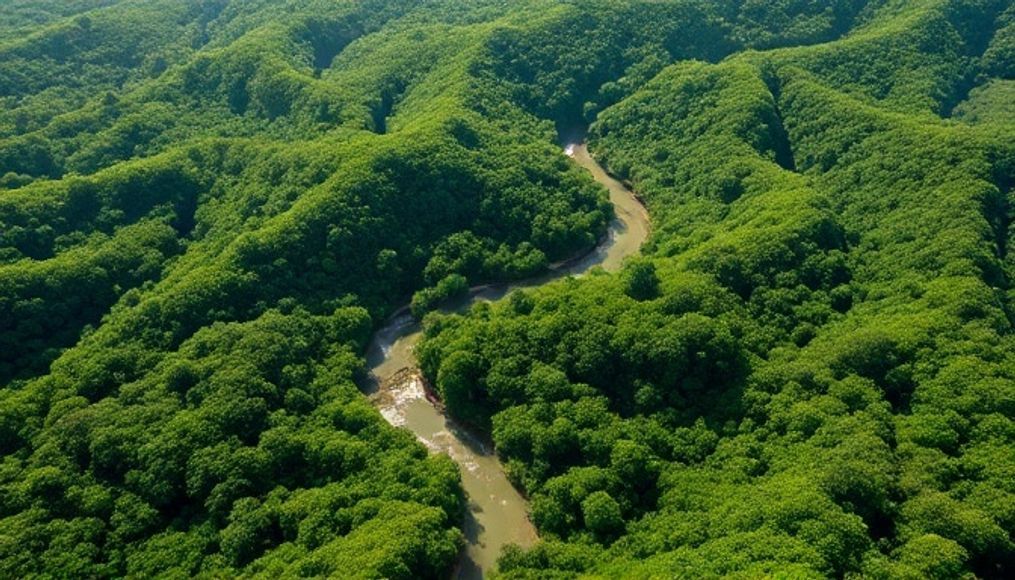What is the Deepest Point in the World's Oceans and What Lies Within?
Oceans cover more than 70% of the Earth's surface and are home to a diverse range of life, from microscopic organisms to massive whales. However, much of the ocean remains unknown to us, especially the deep sea. The question arises: What is the deepest point in the world's oceans, and what lies hidden in these dark and mysterious depths?
1. The Mariana Trench: King of the Depths
The deepest point in the world's oceans is known as the Mariana Trench, located in the western Pacific Ocean. This trench stretches in a crescent shape for over 2,500 kilometers, with an average width of 69 kilometers. But what truly sets the Mariana Trench apart is its immense depth.
The deepest point within the Mariana Trench is called the "Challenger Deep," located at the southern end of the trench. Estimates suggest that the Challenger Deep reaches a depth of approximately 10,929 meters (35,853 feet). To illustrate how deep this place is, imagine placing the summit of Mount Everest, the highest mountain peak on Earth, into the Challenger Deep. There would still be over 2,000 meters of water above the summit of Everest!
2. How Did the Mariana Trench Form?
The Mariana Trench was formed as a result of a tectonic process called subduction. Subduction occurs when one tectonic plate slides beneath another. In the case of the Mariana Trench, the Pacific Plate is subducting beneath the Mariana Plate.
As the tectonic plate slides, it bends and deforms, leading to the formation of a deep trench. In addition, earthquakes and volcanoes associated with subduction can further deepen the trench and shape its complex topography.
3. The Immense Pressure in the Depths
One of the biggest challenges facing life in the Mariana Trench is the immense pressure. At the Challenger Deep, the pressure is more than 1,000 times the atmospheric pressure at sea level. This means that organisms must be able to withstand pressure equivalent to the weight of 50 jumbo jets stacked on top of them!
Organisms in the Mariana Trench have evolved to adapt to this extreme pressure. For example, their cells contain special molecules that help maintain the stability of proteins and enzymes under high pressure. Additionally, they often lack air-filled cavities, which reduces the impact of pressure on them.
4. Life in the Pitch Black Darkness
Sunlight does not reach the depths of the Mariana Trench, making it a completely dark place. Organisms in these depths rely on other sources of energy, such as organic matter sinking from above (called "marine snow") and hydrothermal vents that release chemicals from the Earth's interior.
A diverse range of life exists in the Mariana Trench, including:
- Benthic Fish: These fish are adapted to living on the seafloor and are often small in size with gelatinous bodies.
- Invertebrates: Including worms, crustaceans, sea anemones, and mollusks.
- Microorganisms: Bacteria and archaea play a vital role in nutrient cycling in the trench.
5. Recent Discoveries in the Mariana Trench
Despite the immense challenges of exploring the Mariana Trench, scientists have made several important discoveries in recent years. For example, new species of fish and invertebrates have been found, as well as evidence of human pollution in the depths of the trench.
In 2019, explorer Victor Vescovo broke the record for the deepest human dive into the Mariana Trench. During his dive, Vescovo discovered new life forms, as well as plastic bags and other man-made waste.
6. Human Pollution at the Deepest Point in the World
The discovery of plastic and other waste in the Mariana Trench is a stark reminder of our impact on the environment. Even the most remote places in the world are not immune to human pollution. The plastic likely reached the trench via ocean currents, or by animals that ingested it and then died and sank to the bottom.
Plastic pollution poses a serious threat to marine life in the Mariana Trench. Animals can become entangled in plastic, ingest it, or be exposed to toxic chemicals that leach from the plastic.
7. The Importance of Studying the Mariana Trench
Despite the challenges, studying the Mariana Trench is of great importance. It can help us understand:
- The Origin of Life: The extreme conditions in the Mariana Trench may be similar to the conditions that existed on Earth at the beginning of life.
- Adaptation to Extreme Conditions: Studying the organisms that live in the Mariana Trench can help us understand how organisms adapt to extreme conditions, such as high pressure and complete darkness.
- The Impact of Human Pollution: Studying pollution in the Mariana Trench can help us understand our impact on the environment and how to reduce pollution.
8. Future Challenges in Exploring the Deep
Exploring the Mariana Trench remains a significant challenge. It requires specialized submersibles capable of withstanding the immense pressure, as well as advanced imaging and lighting technologies. However, with continued technological advancements, we can expect to see more exciting discoveries in the Mariana Trench in the years to come.
Future challenges include:
- Developing more advanced submersibles: Submersibles must be able to dive to greater depths, stay underwater for longer periods, and conduct complex scientific experiments.
- Improving imaging and lighting technologies: They must be able to capture high-quality images and videos in complete darkness.
- Developing sample collection technologies: They must be able to collect samples of water, sediment, and organisms without damaging them.
"Exploring the Mariana Trench is an exciting scientific adventure that can reveal secrets of life on Earth and help us protect our environment." - Marine Biologist
In conclusion, the Mariana Trench is the deepest point in the world's oceans and a mysterious and fascinating place. Despite the immense challenges of exploring it, scientists have made many important discoveries, including new species of life and evidence of human pollution. Studying the Mariana Trench is of great importance, as it can help us understand the origin of life, adaptation to extreme conditions, and the impact of human pollution. With continued technological advancements, we can expect to see more exciting discoveries in the Mariana Trench in the years to come.




